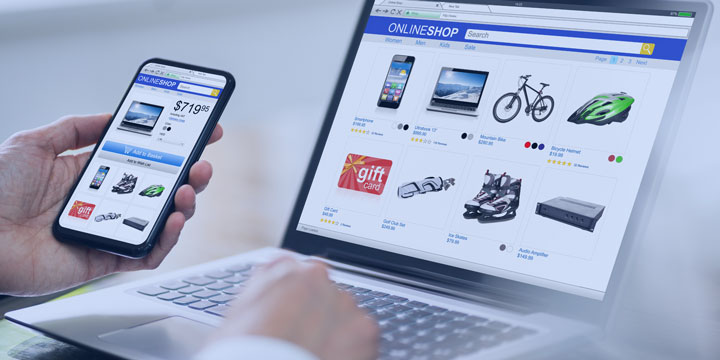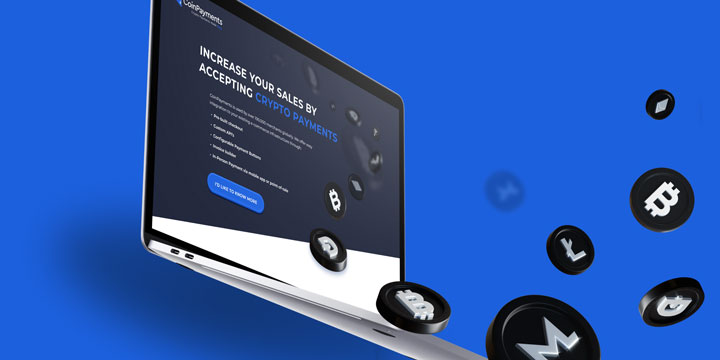Over the past decade, commerce has undergone significant transformations, primarily driven by increasing eCommerce sales. With a considerable increase from 4% to 15% of the total U.S. retail market, eCommerce businesses have witnessed tremendous growth, accounting for an online sales leap of nearly $1.4 trillion.
Nevertheless, this shift to online retail hasn’t diminished the presence of physical stores, and surprisingly, the post-pandemic era has seen a resurgence of brick-and-mortar retail stores. For many customers, the allure of a physical store lies in the chance to step away from the house and the computer.
In this dynamic landscape, it becomes crucial to compare and contrast eCommerce with retail, understanding their respective definitions, histories and importance. Analyzing the strengths and weaknesses of both approaches will enable businesses to make informed decisions about their prospects.
In the following sections, we’ll delve deeper into eCommerce and retail’s strengths, weaknesses, and future prospects, providing valuable insights for businesses looking to thrive in this exciting predicament.
Let’s start with the definition of both terms.
A Quick Overview of eCommerce vs Retail
eCommerce – refers to buying or selling goods and services primarily online. Simple examples include purchasing shoes and having them delivered or buying clothes online and picking them up in a store. An “eCommerce business” operates mostly online, using platforms like credit card payment gateways to execute transactions.
Retail isn’t the opposite of eCommerce; retail includes enterprises selling goods and services to customers. The transactions can involve physical items like clothes or software and the computers they run on. Retail businesses have various avenues, from in-person sales at brick-and-mortar stores to selling products on platforms like Amazon.
Is eCommerce considered retail? – Absolutely! eCommerce is a retail activity where businesses sell things online to customers. It encompasses both physical products like shirts and digital goods like software. Essentially, most eCommerce businesses are retail businesses. Not all retail businesses operate solely like eCommerce enterprises.
Now we can unearth the secrets of eCommerce and retail businesses.
What Are Traditional Retail Stores and How Do They Work?
Now, let’s consider traditional retail, brick-and-mortar and department stores you know and love. These formats have been around for ages. Retail stores offer a more personal experience than online shopping as clients interact with business owners directly. So, how can you increase your retail sales? Is there a better way to serve your clients? Should you move your store online?

Let’s try to dissect retail store operations in the next section to aid your decision-making.
Exploring the Diverse Formats of the Retail Business
Traditional retail, in a nutshell, refers to the classic shopping experience you have when you step into a physical store. It’s all about face-to-face interactions, strolling through aisles and touching the products you’re interested in.
What Do Consumers Gain When Shopping in a Retail Store?
Retail businesses incorporate enticing perks to attract new and retain old customers.

In-Person Shopping Experience
Picture this: you walk into a store and all your senses come alive. The colors, the smells, the touch of the products—it’s an immersive experience online shopping can’t fully replicate. For many, there’s just something special about physically seeing and feeling the items before making a purchase.
Tangibility and Immediate Product Access
When you visit a brick-and-mortar store, there’s no waiting around for your package to arrive. You can get your hands on your desired product right then and there. No need to deal with shipping delays or damaged goods in transit.
Personalized Customer Service
In physical stores, you often get the undivided attention of knowledgeable staff. They can offer personalized recommendations, answer your questions on the spot and guide you to find exactly what you need. It’s a level of service making a big difference in your shopping journey. But does this mean retail stores are superior to eCommerce? Let’s find out below.
Tapping into Technology for Limitless eCommerce Business Opportunities

Once considered a novelty, the eCommerce store has now become a dominant force in the market. Its rapid growth and convenience have reshaped shopping, providing numerous advantages like global reach, 24/7 accessibility and targeted marketing. More shoppers are shifting from brick-and-mortar stores to eCommerce solutions. Let’s review eCommerce and discover what makes it appealing.
The Different eCommerce Business Models
There are three primary models of eCommerce:
- Business-to-Consumer (B2C): This model focuses on the relationship between businesses and individual consumers. Most of us encounter it daily when we shop for clothes, gadgets or groceries in various online stores.
- Business-to-Business (B2B): Here, the action happens between businesses. Companies purchase products or services from other companies to keep their operations running smoothly. Think of it as a wholesaler supplying goods to a retailer.
- Consumer-to-Consumer (C2C): C2C eCommerce brings together individual consumers to buy and sell to each other. Platforms like eBay and Craigslist are classic examples of this model.
Now that we’ve explored eCommerce’s primary models let’s delve into the advantages it offers to businesses.
Why Businesses Are Thriving with eCommerce

Global Reach and Market Expansion
Unlike traditional retail, where you’re confined to a physical location, eCommerce breaks down geographical barriers. Your online business can now reach customers far and wide, expanding its markets exponentially.
Lower Operational Costs
Running a brick-and-mortar store has significant overhead expenses like rent, utilities and in-store staff. eCommerce slashes these costs, allowing your online store to operate more efficiently.
Data-Driven Insights and Personalization
The beauty of eCommerce lies in its ability to gather valuable data on customer preferences and behavior. This data provides insights to create personalized experiences, ultimately boosting customer satisfaction and loyalty. Naturally, these benefits pass on to the consumer, allowing online businesses to achieve higher customer satisfaction rates. Below are advantages for online shoppers.
The Benefits of eCommerce for Today’s Consumers
With eCommerce, shopping is at your fingertips, literally. No more battling traffic or hunting for parking spots. You can access numerous products from the comfort of your couch anytime, day or night. Additionally, eCommerce businesses feature numerous products, including those from different countries, making them a shopper’s paradise.
The online marketplace is highly competitive, which is excellent news for consumers. You’ll often find better prices and irresistible deals as businesses strive to win your clientele. eCommerce also empowers consumers with valuable insights through customer reviews and ratings. These candid opinions help customers make informed decisions and avoid potential pitfalls.
A Comparison of the Shopping Experience in eCommerce vs Retail
Customers will always prefer a superior shopping experience, whether purchasing items in a brick-and-mortar store or from an eCommerce platform. So, what do shoppers consider?
| Aspect |
eCommerce |
Retail (Traditional) |
| Sales Platform |
Conducted online through websites |
Physical stores and in-person sales |
| Operating Hours |
24/7 availability |
Limited by store opening hours |
| Overhead Costs |
Lower, as no need for physical stores |
Higher due to maintaining the premises |
| Customer Reach |
Global reach with potential worldwide customers |
Local reach, focusing on nearby communities |
| Customer Experience |
Virtual shopping experience |
Hands-on, in-person shopping |
Convenience (Mostly) Over Everything

The Rise of Mobile Shopping and Apps
In today’s digital era, mobile shopping has skyrocketed in popularity. People love the convenience of shopping on their smartphones and tablets. As an eCommerce retailer, optimizing your services online for mobile and having a user-friendly app can significantly boost your sales.
The Impact of User Interface and Website Design
When shopping online, the first impression matters. A well-designed and intuitive user interface can make all the difference between a satisfied customer and one who quickly clicks away. Customers appreciate easy navigation, clear product images and a smooth checkout process.
Consumer Concerns Regarding Security and Privacy
Shoppers want safety assurance for their personal and financial information. Implementing robust security measures and displaying trust badges can instill confidence in your customers and encourage them to complete their purchases without hesitation.
Customer Preferences and Behavior in Retail

Factors Influencing In-Store Purchases
When customers enter a brick-and-mortar store, various factors influence their buying decisions. Seeing and touching products in person allows for a more tactile experience shoppers find essential. Imagine the excitement of taking home newly purchased items or walking around with branded shopping bags in shopping malls.
Make Your Retail Business Visually Appealing
Visual merchandising is crucial in attracting customers and increasing sales in retail stores. Strategic product placement, eye-catching displays, and an inviting atmosphere can enhance the shopping experience. Well-organized store layouts guide customers through the store and lead them to explore more products.
Customer Service and Its Impact on Brand Loyalty
Outstanding customer service can make or break a brand’s reputation in eCommerce and retail businesses. Shoppers value personalized interactions with store staff, who can offer recommendations, address concerns and create a positive shopping environment. Satisfied customers will likely become loyal patrons, spreading positive word-of-mouth and boosting brand loyalty.
Merging the Benefits of Retail and eCommerce for Business Growth

Online shopping has significantly impacted physical stores, turning many into showrooms. Customers now visit stores to explore tech gadgets and computers in person, but when ready to buy, they order online for various reasons—comfort, preference, and more options. As a result, brands can reduce physical locations while maintaining or increasing their retail sales.
eCommerce’s limitation lies in the inability to feel or see products before purchase, which customers may find unfavorable. Blended retail and eCommerce businesses see more online purchases, but significant decisions and relationships still happen in person, maintaining the importance of physical stores as essential customer touchpoints. Below are methods businesses use to improve their retail sales by integrating an online store.
- Smart retailers are adopting omnichannel strategies, uniting eCommerce and traditional retail. This seamless shopping experience satisfies diverse customer preferences, like online purchasing with in-store pickup for convenience.
- Click-and-collect and buy-online-pickup in-Store (BOPIS) trends are also gaining momentum. Shoppers buy online and pick up in-store, combining eCommerce benefits with hands-on retail experience. BOPIS saves on shipping and lets customers inspect items before taking them home.
Blending eCommerce and retail strengths caters to diverse customer preferences, creating an all-encompassing shopping experience and driving business success.
With the positive results from leveraging the benefits of eCommerce and retail, could there be another way to improve sales in both business operations?

Crypto Payments – The Next Frontier in eCommerce vs Retail
As up-and-coming businesses strive to carve their place in this dynamic scenario, they face a pivotal decision; should they embrace the traditional brick-and-mortar model or go all-in with eCommerce? Amidst the pondering question, cryptocurrency (specifically cryptocurrency payment) has emerged as a solution to improve retail and eCommerce sales.
While both eCommerce and traditional retail have their strengths, integrating cryptocurrency into the mix opens up exciting new possibilities. For eCommerce businesses, accepting cryptocurrencies like Bitcoin, Ethereum, or Litecoin can attract tech-savvy customers who value privacy and security. It also allows global transactions with lower fees and faster processing times, appealing to international shoppers.
On the retail front, implementing cryptocurrency payments can modernize brick-and-mortar stores, attracting a younger, tech-oriented audience. This move may increase foot traffic and customer loyalty as shoppers appreciate the convenience and innovation.
Various online and physical retail store owners readily accept crypto tokens as payment currencies. With this approach, enterprises can run an integrated business model utilizing eCommerce tools to cater to the growing cryptocurrency-paying customer. Thanks to cryptocurrency gateways, online stores have become the gateway to international markets. Large retail chains can now tap into a vast audience, expanding their reach beyond geographical limitations.
Integrating the Leading Crypto Gateway Service Provider

CoinPayments is trusted by thousands of users since 2013. The unparalleled reliability of crypto payments and a global reach make CoinPayments the ultimate payment partner for eCommerce platforms.
You’ll spend less per transaction with an industry-low fee starting at 0.5%, ensuring you have plenty remaining from your crypto revenue to build your eCommerce brand.
So, how can you improve your eCommerce store? Integrate CoinPayments to handle all your cryptocurrency transactions. Ensure your client experience is satisfactory when they shop online or in-store.









